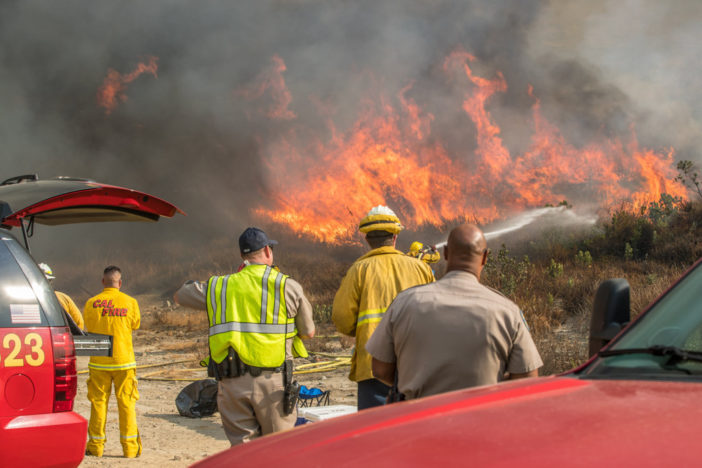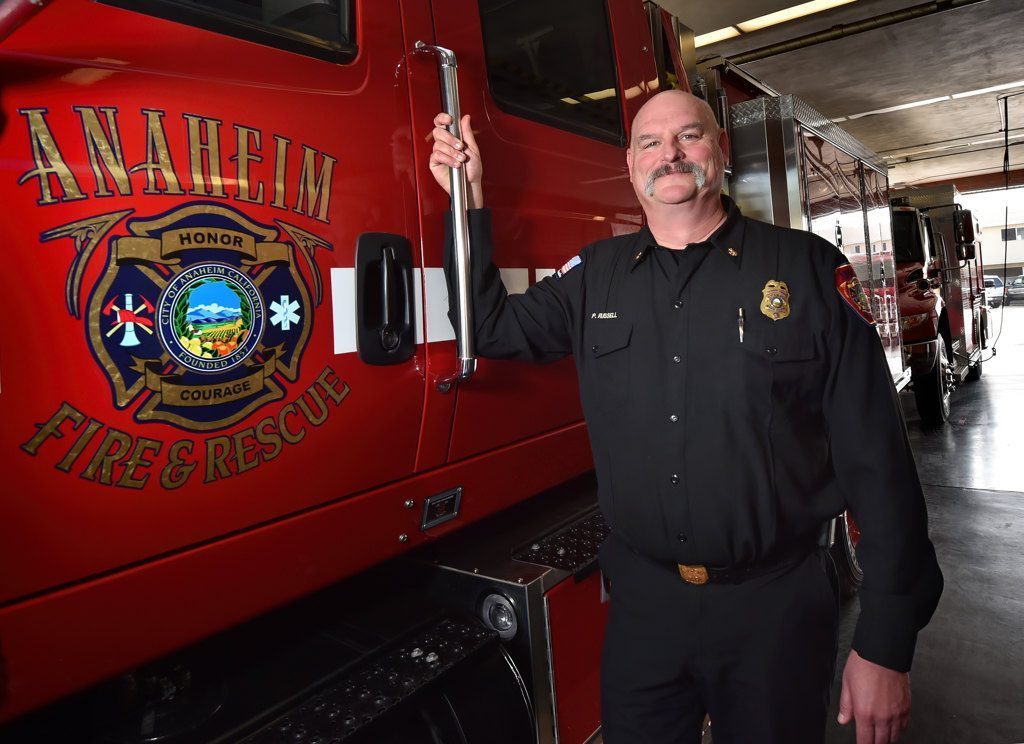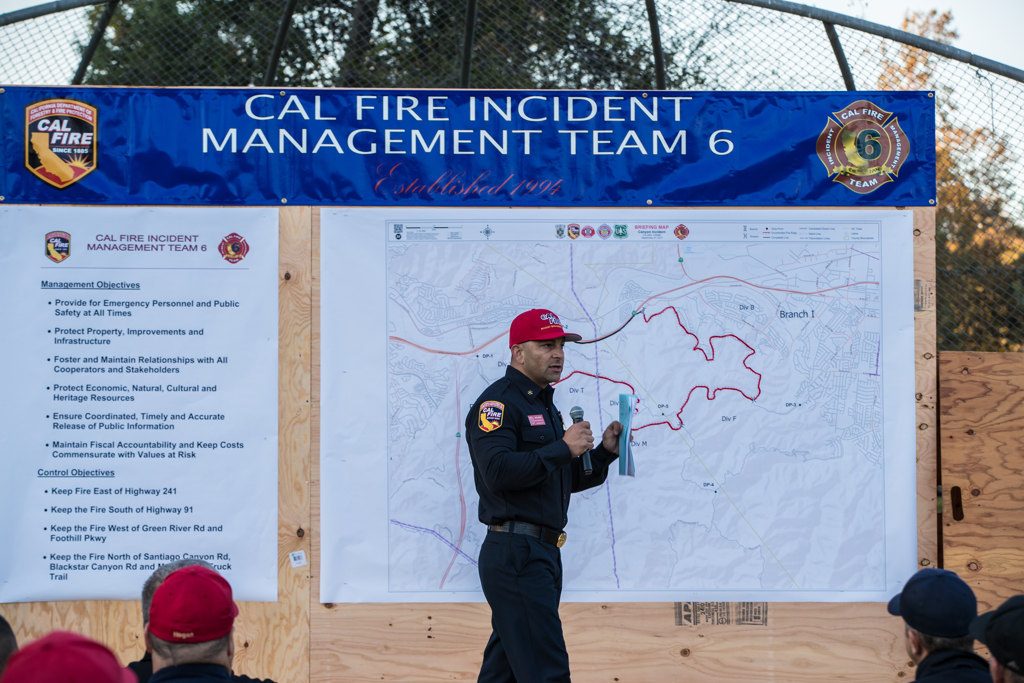As fires hit California this past year, it became increasingly apparent that similar large-scale disasters require a team approach.
It’s for this reason that the federal National Incident Management System (NIMS) and the state Standardized Emergency Management System (SEMS) exist.
On a local level, agencies like Anaheim Fire & Rescue and the Anaheim Police Department participate through Incident Management Teams, which operate under these systems, in helping other cities and counties when disaster strikes. Anaheim has been a part of the Incident Management Teams for about 25 years.
“It’s not just for fire, it’s involved in everything,” said APD and AF&R PIO Sgt. Daron Wyatt, who started training last year to become part of an Incident Management Team, which can deploy for any number of disasters, including earthquakes, fires, hurricanes and civil unrest.
Incident Management Teams are an elaborate structure of fire and police personnel divided into three types: Type 1, 2 and 3. Type 1 is the highest level and most robust Incident Management Team, typically used for incidents with the greatest complexity, usually involving multiple jurisdictions and a high potential for involving state and national resources. Type 3 is the lowest level, operating at a county operations level.
In California, there are seven Type 2 teams, four federal Type 1 and six CAL FIRE (state) Type 1 teams. Orange County has three Type 3 teams.
Anaheim Fire & Rescue currently has four people assigned to various types of teams: Deputy Chief Pat Russell, who is operations section chief for a federal Type 1 team and an incident commander for one of the OC Type 3 teams; Capt. Aaron Mooney, who is the planning section chief for a federal Type 2 team and an Orange County Type 3 team; Battalion Chief Chad Thompson, a safety officer for a CAL FIRE Type 1 team; and firefighter James Moreta, who is on one of the Orange County Type 3 teams.
The Anaheim PD has two people involved with the Incident Management Teams: Lt. Chris Pena is a law enforcement liaison officer, and Wyatt, who is serving as an alternate PIO for one of the teams. The process for an individual to gain an assignment to a specific team can be lengthy, requiring many levels of training and peer review.
“For all of these positions, you have to be certified to be involved,” said Wyatt.
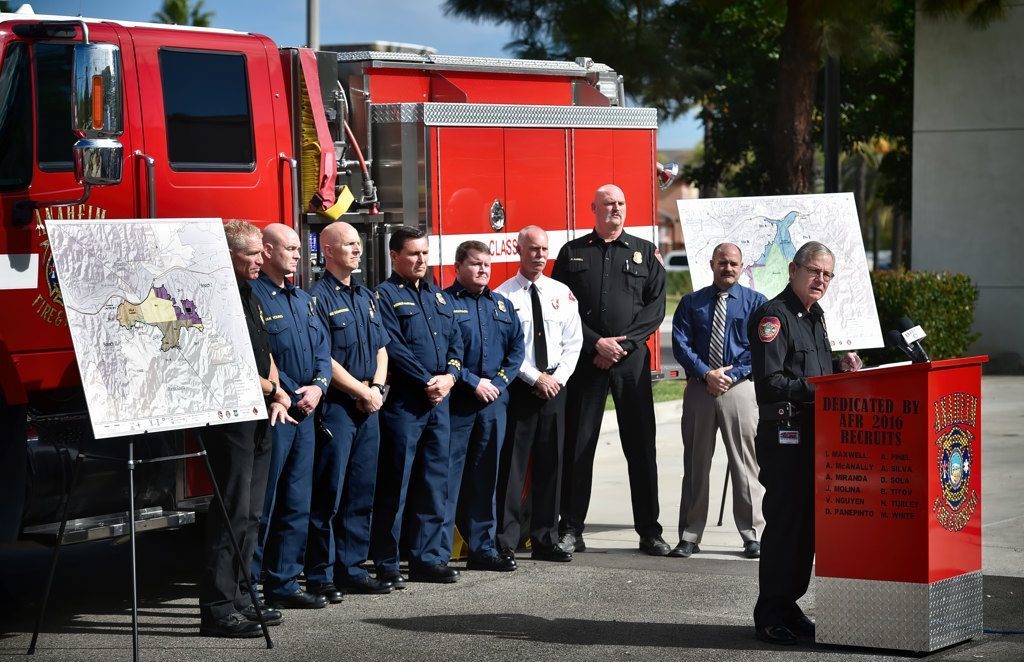
Several officials from various fire service agencies, including Anaheim Fire & Rescue Chief Randy Bruegman (at podium), attend a news conference announcing the causes of Canyon Fire 1 and 2. File photo by Steven Georges/Behind the Badge OC
The California Incident Command Certification System (CICCS) is the system through which individuals qualify for specific positions on a team.
“It’s a long process requiring a great deal of commitment to go through it,” Wyatt said.
But he and others on the teams know the value. Not only do teams assist areas in need of support through major disasters that extend over a period of a day, days or longer, but team members gain invaluable experience they can bring back to their own cities and counties.
When Wyatt started training to become a team member, he requested to deploy out of county to gain experience. He deployed to Weaverville to assist with the Helena fire late last summer. Two weeks later, Canyon Fire 1 hit the Corona/Anaheim border, which was followed by Canyon Fire 2 in Anaheim. Both blazes were supported by Incident Management Teams.
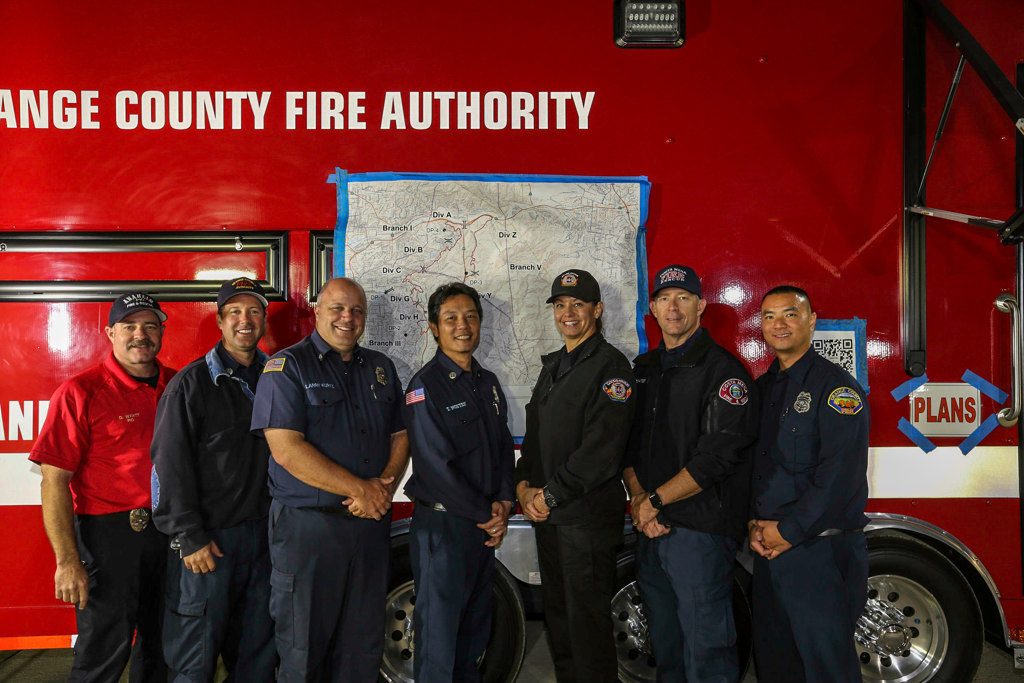
The PIO group for the Canyon 2 Fire (from left) APD Sgt. Daron Wyatt, Capt. Steve Concialdi of the Orange County Fire Authority, Capt. Larry Kurtz of the OCFA, Capt. Thanh Nguyen of the Garden Grove Fire Department, Dispatch Supervisor Tracy Nolan of MetroNet, Capt. Chris Coates of the Costa Mesa Fire Department, and Firefighter Mike Yeun of the OCFA. Photo by APD Sgt. Daron Wyatt
“It was hugely beneficial for me to see it,” Wyatt said of experiencing the Helena fire as part of an Incident Management Team out of the county before he experienced it in his city.
Russell has been part of the Incident Management Teams for 18 years. His roles on the teams have included Type 2 team safety officer, Type 1 division supervisor/branch director/off section operation chief for the federal Type 1 team and Type 3 incident commander for Orange County All Hazard Type 3 Incident Management Team. He has been sent out to Montana, Texas, Oregon, New Mexico, Washington, Arizona and all over California.
He said participating as a member of the teams has offered him the opportunity to exercise skills and gain experience in the positions for which he’s trained.
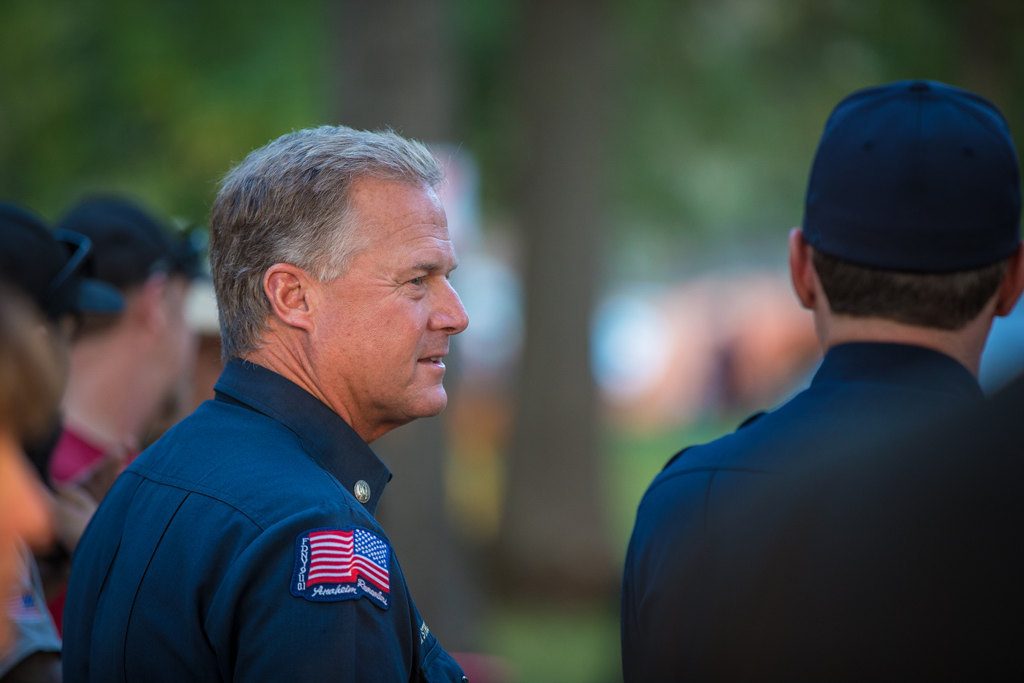
Anaheim Fire & Rescue Capt. John Strickland during an operations briefing during the Helena Fire. Photo by APD Sgt. Daron Wyatt
“For the city, the benefit is that staff receives this level of incident command experience which prepares them to better serve the city and county during our own incidents,” he said. “The city gets reimbursed – by FEMA, the California Office of Emergency Services, U.S. Forest Service … depending on where the incident is based – for the staff cost, so it doesn’t cost the City of Anaheim anything.”
Mooney, who has been involved with the teams for seven years, said he’s been sent out to Utah, Nevada, Washington, Oregon and other parts of California assisting on large-scale fires.
As a planning section chief, Mooney is involved with leading the management of resources, leading the unit that provides intel, as well as handling mapping products and demobilization.
He said one of the most important jobs of the planning section chief involves overseeing the development of the Incident Action Plan (IAP), making sure all sections are complete and then approving the plan for publication, which is then distributed at the operational briefing (which is every 12 or 24 hours). The IAP is a plan for that operational period that breaks down each area of the incident and how the resources assigned will deploy and work toward achieving the management and control objectives for that period.
Mooney said it benefits cities like Anaheim to have personnel who know how the Incident Management Teams work, so that when a disaster happens locally – such as Canyon Fires 1 and 2 – “it helps, for a smooth transition” into the IMT system.
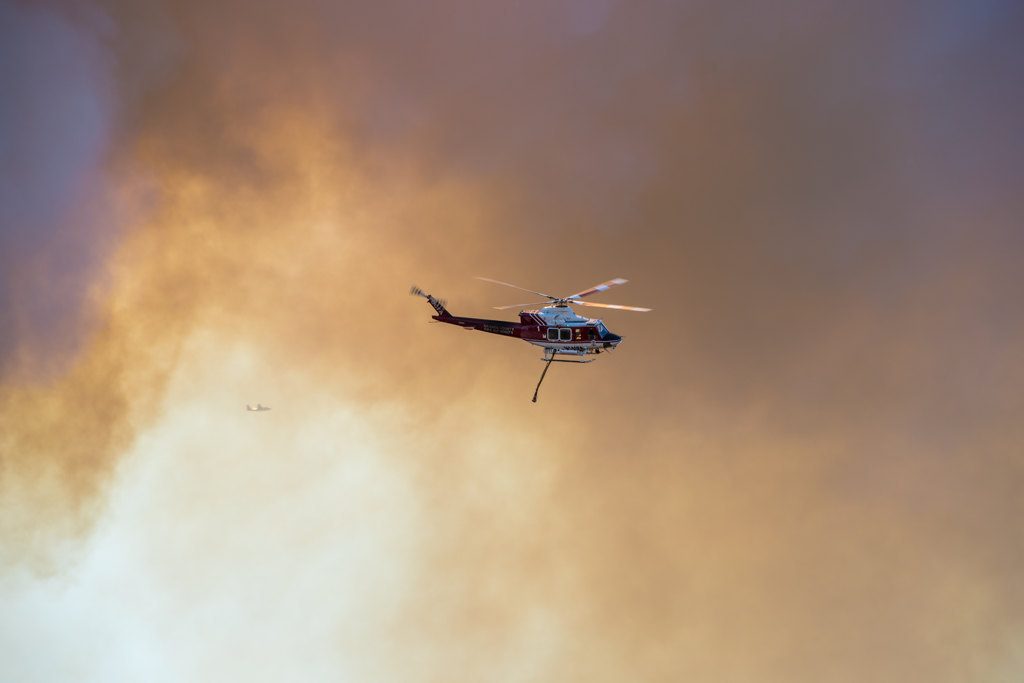
An OCFA helicopter and a CAL FIRE water tanker during the initial attack of the Canyon Fire 1. Photo by APD Sgt. Daron Wyatt
“You’ve already done it, so to speak, and you can transfer your experience,” he said.
While there is police involvement on the teams, Wyatt said most of the teams are made up of fire personnel. Because of that, Cal OES, which oversees CICCS, is looking for more police officers to become involved. To that end, Anaheim PD is starting to participate in increased unified command training with Anaheim Fire & Rescue. There’s also a plan in the works to begin a smaller, internal team at the APD.
“We’re looking at getting more police officers trained and getting task books completed and deploying them so it’s a more balanced contingency,” Wyatt said. “You never know when your jurisdiction will face a disaster. It’s always best to have seen it somewhere else before it’s in your own backyard.”

Anaheim Fire & Rescue Battalion Chief Chad Thompson (left) is a safety officer for a CAL FIRE Type 1 team. File photo by Steven Georges/Behind the Badge OC
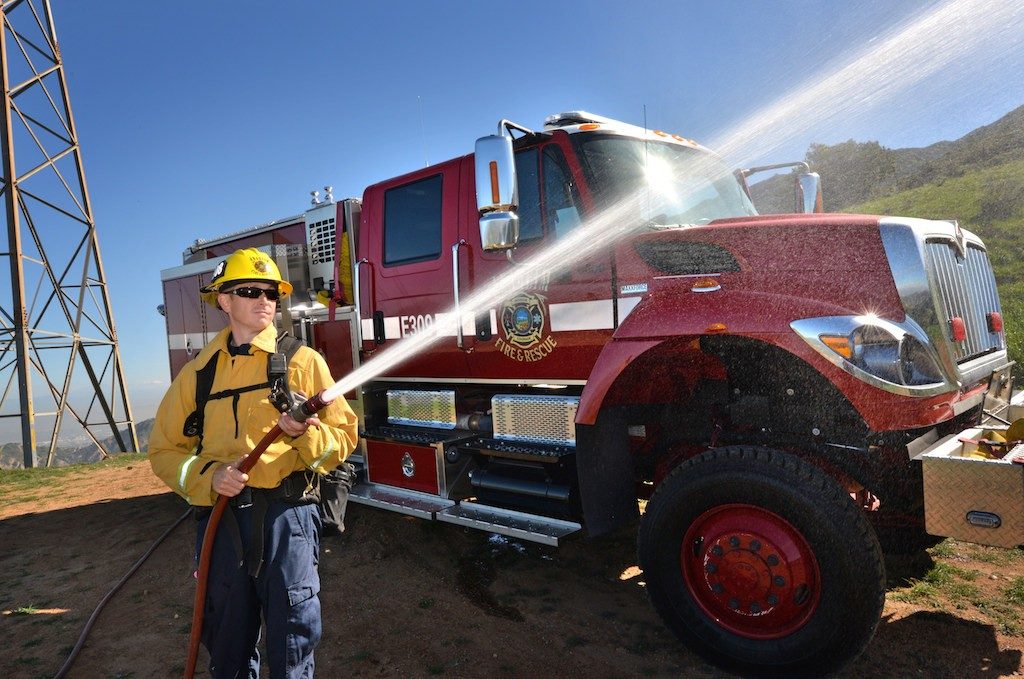
Anaheim Fire & Rescue Firefighter James Moreta during wildland fire training. File photo by Steven Georges/Behind the Badge OC

Anaheim Fire & Rescue Deputy Chief Pat Russell (center, standing upright) updates the incident map during the initial attack on the Canyon Fire 1 on Sept. 25, 2017. Photo by APD Sgt. Daron Wyatt
 Behind the Badge
Behind the Badge
